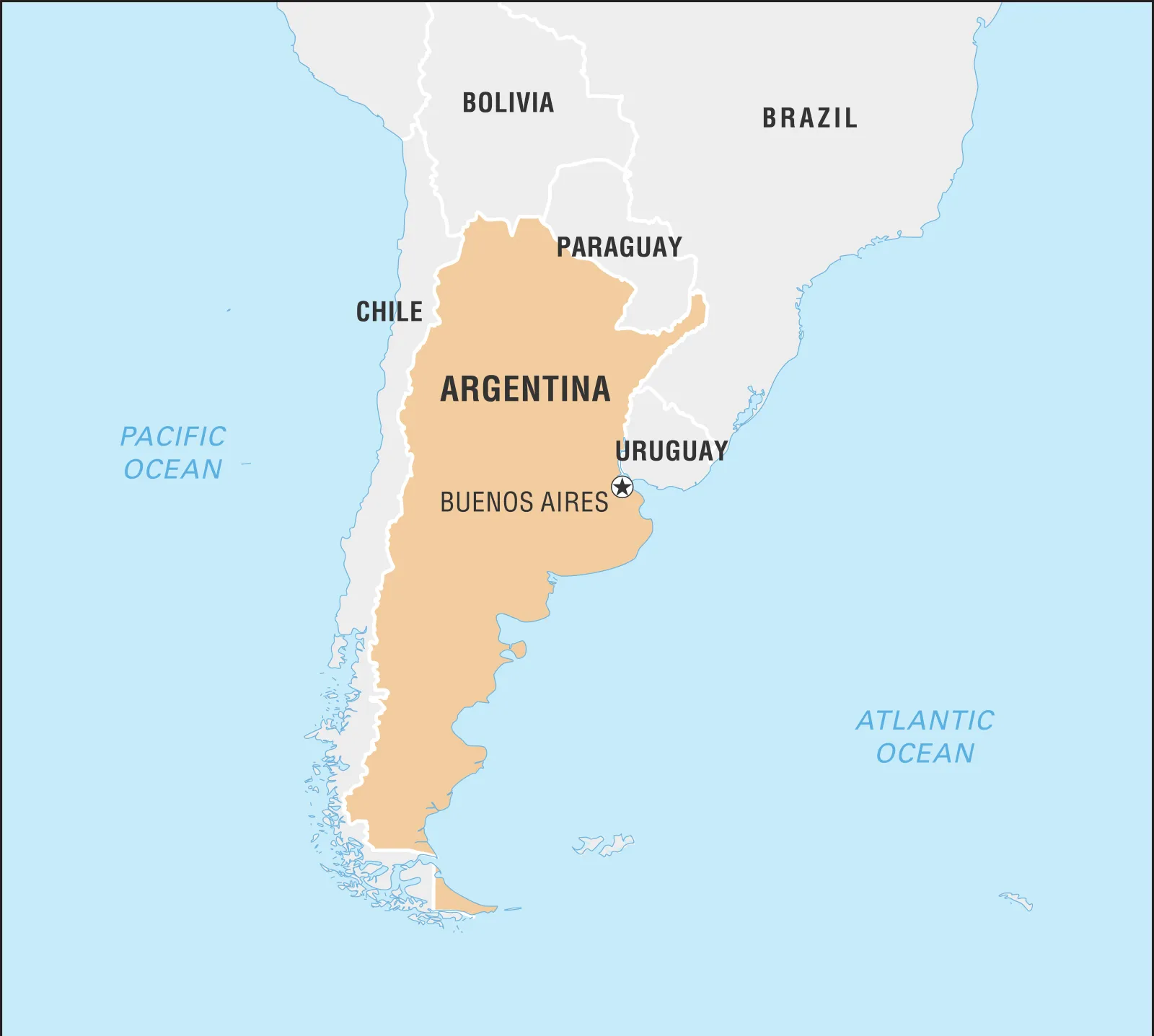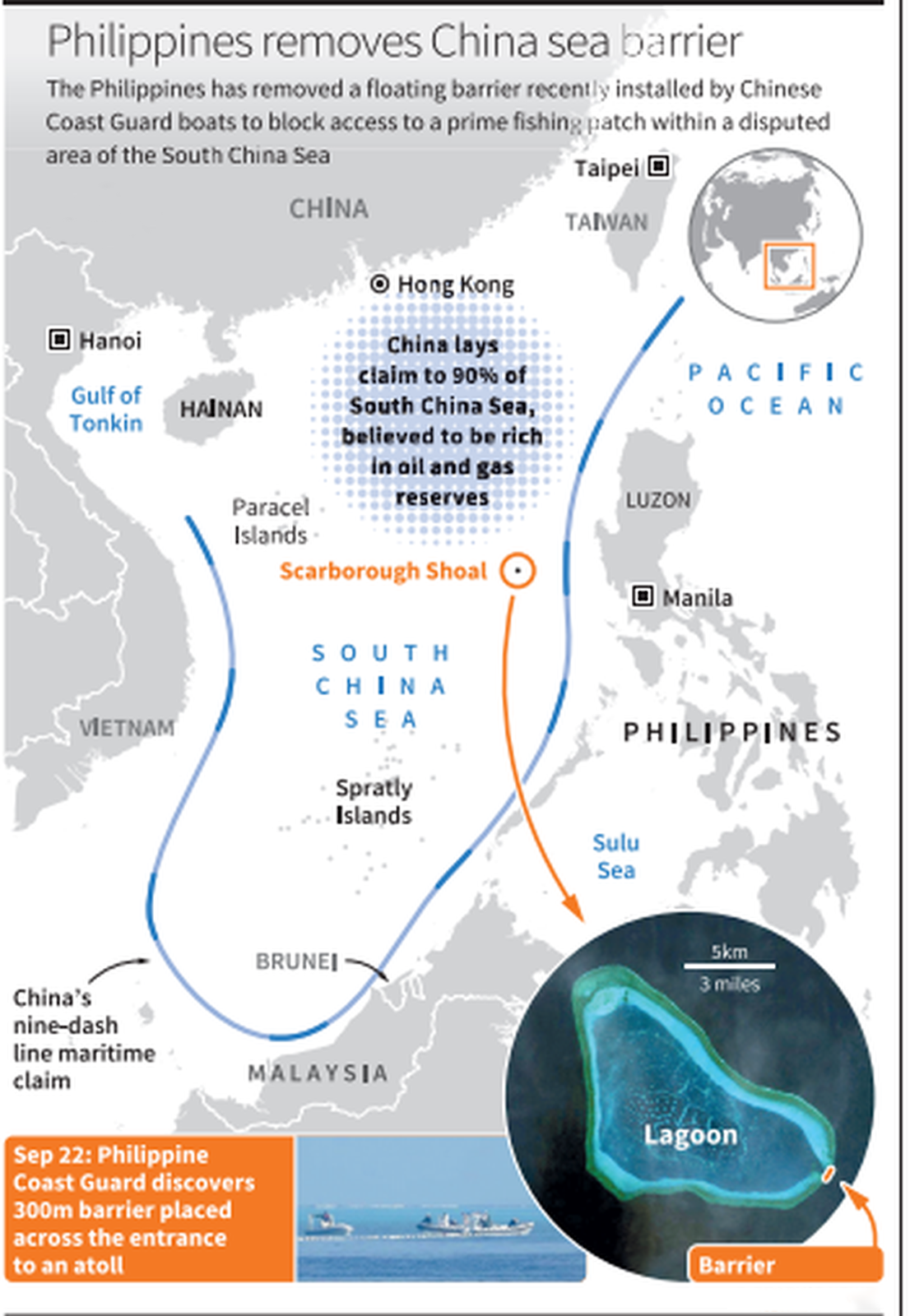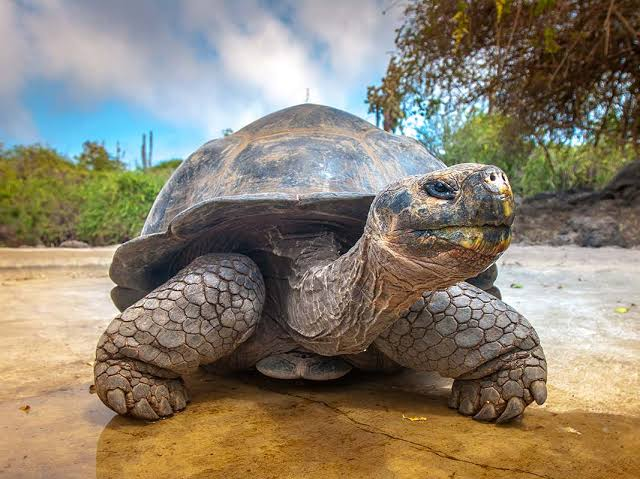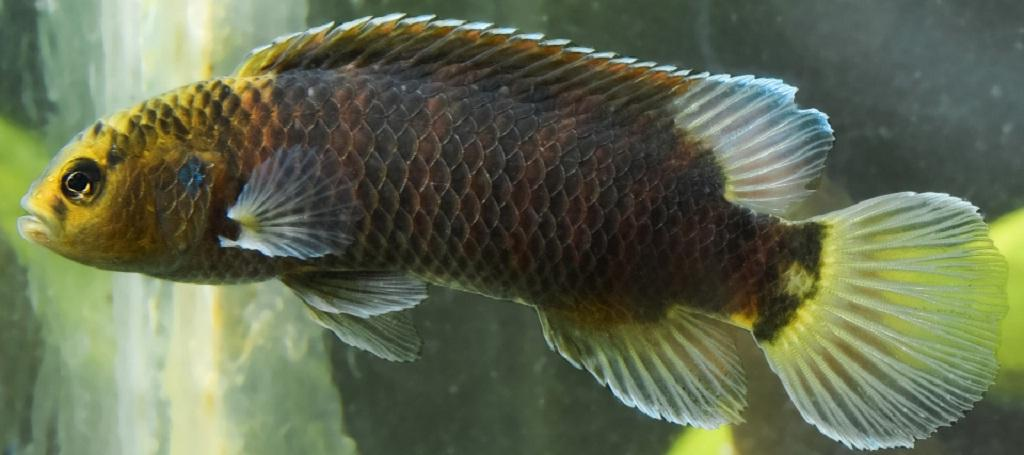Science & Technology
Nobel Prize in Chemistry 2023
For Prelims: Nobel Prize in Chemistry 2023, Quantum Dots, Quantum technology, Nanomaterials, LEDs.
For Mains: Applications of Quantum Dots.
Why in News?
The Royal Swedish Academy of Sciences awarded the Nobel Prize in Chemistry 2023 to Moungi G Bawendi, Louis E Brus, and Alexei I Ekimov for their groundbreaking discovery and synthesis of quantum dots.
How did Scientists Discover Quantum Dots?
- Background:
- Traditionally, all pieces of a pure element, regardless of size, were believed to have identical properties due to the uniform distribution of electrons.
- However, about forty years ago, scientists discovered that nanoparticles on the nanoscale, typically 1 to 100 billionths of a meter in size, exhibited distinct behaviors different from their larger counterparts of the same element, challenging this conventional belief.
- Traditionally, all pieces of a pure element, regardless of size, were believed to have identical properties due to the uniform distribution of electrons.
- The Nobel Laureates' Contributions:
- Alexei Ekimov: In around 1980, Alexei Ekimov was the first to observe the anomalous behavior in Copper Chloride nanoparticles.
- He successfully manufactured these nanoparticles, showcasing their distinctive properties.
- Louis Brus: American scientist Louis Brus made a similar discovery involving Cadmium Sulphide nanoparticles.
- Like Ekimov, he could create these nanoparticles with altered properties.
- Moungi Bawendi: Moungi Bawendi, who initially collaborated with Louis Brus, later played a pivotal role in simplifying the production methods for nanoparticles with unique characteristics.
- His work paved the way for efficient and controlled manufacturing of nanoparticles displaying desired deviant behaviors.
- Alexei Ekimov: In around 1980, Alexei Ekimov was the first to observe the anomalous behavior in Copper Chloride nanoparticles.
- Factor Responsible for Distinctive Properties of Nanoparticles:
- The unconventional behavior of small nanoparticles is a result of the emergence of quantum effects.
- Despite nanoparticles being considerably larger than individual atoms, a crucial insight emerged in the 1930s, that when particles are reduced to the nanoscale, quantum effects can come into play.
- This is primarily because, under such conditions, electrons within atoms find themselves confined within a limited space.
- Typically, electrons move within a relatively spacious area outside the nucleus of an atom.
- However, as particle size drastically decreases, electrons experience increasing constraints, leading to the manifestation of these peculiar quantum effects.
- This is primarily because, under such conditions, electrons within atoms find themselves confined within a limited space.
- This profound understanding, as observed and demonstrated by the Nobel Laureates, Ekimov and Brus in their laboratories, resulted in the creation of nano-sized particles with distinct behaviors compared to their larger counterparts of the same element.
- These remarkable nanoparticles, possessing unique properties, came to be known as quantum dots.
- Feature of Quantum Dots: Quantum dots are nanoscale particles, typically ranging in size from 1 to 100 nanometers. These minuscule structures possess unique properties that are governed by their size.
- Notably, the size of quantum dots determines the colour of light they emit, with smaller dots emitting blue light and larger ones shining in yellow and red.
Note
- Quantum Effect: Quantum refers to the fundamental behavior of matter and energy at the smallest scales, where classical physics no longer applies.
- Quantum effects are the phenomena that occur at the quantum level, where particles like electrons exhibit behaviors such as superposition and entanglement, which are distinct from classical physics.
- Quantum Technology: Quantum technology harnesses the unique properties of quantum mechanics to create innovative tools and applications, including quantum computing, quantum cryptography, and quantum sensors, with the potential to revolutionize various fields.
What can be the Applications of Quantum Dots?
- Display Technology: Quantum dots can enhance the quality of displays, such as LED lamps and television screens, by emitting clear and vibrant light.
- Medical Imaging: They can illuminate tumor tissue during surgery, aiding surgeons in precise removal.
- Their nanoscale size makes them ideal for use in tiny sensors.
- Flexible Electronics: Quantum dots hold promise for flexible electronics, paving the way for innovative and adaptable devices..
- Slimmer Solar Cells: Quantum dots could lead to more efficient and compact solar cells, improving renewable energy solutions.
- Encrypted Quantum Communication: Quantum dots might play a role in developing secure quantum communication technologies, protecting sensitive information.
Who are the Other Recent Nobel Laureates in the Field of Chemistry?
- 2022
- Carolyn R. Bertozzi, Morten Meldal and K. Barry Sharpless “for the development of click chemistry and bioorthogonal chemistry”
- 2021
- Benjamin List and David MacMillan “for the development of asymmetric organocatalysis”
- 2020
- Emmanuelle Charpentier and Jennifer A. Doudna “for the development of a method for genome editing”
- 2019
- John B. Goodenough, M. Stanley Whittingham and Akira Yoshino “for the development of lithium-ion batteries”
- 2018
- Frances H. Arnold “for the directed evolution of enzymes”
- George P. Smith and Sir Gregory P. Winter “for the phage display of peptides and antibodies”
Reference to Other Announcements of the Nobel Prizes 2023: Physics , Physiology or Medicine

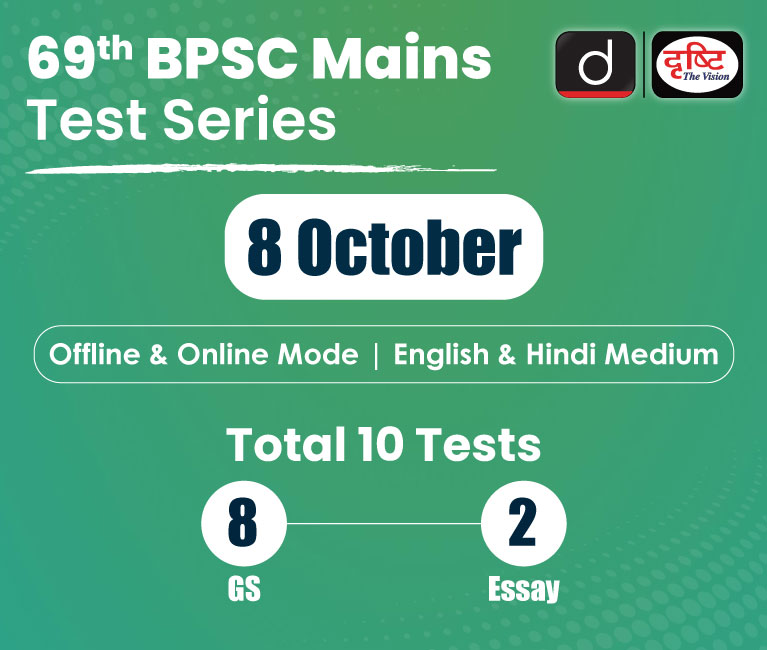
Biodiversity & Environment
Methane Emissions from Livestock
For Prelims: Food and Agriculture Organization (FAO), Methane Emissions,
For Mains: Initiatives in India to tackle methane emissions, Significance of methane as a greenhouse gas and its impact on climate change.
Why in News?
A recent Food and Agriculture Organization (FAO) report, titled "Methane Emissions in Livestock and Rice Systems," highlights the significant climate impact of methane emissions from livestock and rice paddies.
- Released during FAO's inaugural 'Global Conference on Sustainable Livestock Transformation' in September 2023, the report emphasizes the importance of reducing methane emissions in achieving the Paris Agreement's goals, as noted in the Intergovernmental Panel on Climate Change's Sixth Assessment Report.
What are the Key Findings from the Report?
- Sources of Methane Emissions:
- Ruminant livestock and manure management contribute to approximately 32% of global anthropogenic methane emissions.
- Rice paddies account for an additional 8% of methane emissions.
- Besides agrifood systems, other human activities that generate methane emissions include landfills, oil and natural gas systems, coal mines and more.
Note
- Ruminants are mammals of the suborder Ruminantia (order Artiodactyla).
- They encompass a diverse group of animals such as giraffes, okapis, deer, cattle, antelopes, sheep, and goats.
- Most ruminants have a four-chambered stomach and two-toed feet. Camels and chevrotains, however, have a three-chambered stomach and are often referred to as pseudoruminants.
- Impact of Ruminant Livestock:
- Among ruminants, cattle are the highest daily emitters of methane, followed by sheep, goats, and buffalo.
- Ruminant meat and milk are significant protein sources, and global demand for animal products is expected to rise by 60-70% by 2050.
- Improving Feed Efficiency:
- Report focuses on improving feed to reduce methane emissions by enhancing feed efficiency.
- This involves increasing nutrient density, and feed digestibility, altering rumen microbial composition, and selectively breeding animals with negative residual feed intake and smaller metabolic body weight.
- Enhanced feed efficiency boosts animal productivity per unit of feed, potentially increasing farm profitability based on feed costs and meat/milk revenues.
- Report focuses on improving feed to reduce methane emissions by enhancing feed efficiency.
- Need for Regional Studies:
- The report underscores the need for regional studies to quantify the effects of improved nutrition, health, reproduction, and genetics to increase animal production and decrease methane emission.
- Such studies would help assess the impact of mitigation strategies on net greenhouse gas emissions at a regional level.
- The report underscores the need for regional studies to quantify the effects of improved nutrition, health, reproduction, and genetics to increase animal production and decrease methane emission.
- Strategies for Mitigating Methane Emissions:
- The study noted four broad strategies in mitigating methane emissions:
- Animal breeding and management.
- Feed management, diet formulation and precision feeding.
- Forages.
- Rumen manipulation.
- The study noted four broad strategies in mitigating methane emissions:
- Challenges and Research Gaps:
- Challenges include the lack of regional information to calculate carbon footprints and limited economically affordable methane mitigation solutions.
- Further research is needed to develop practical and cost-effective measures.
Methane
- Methane is the simplest hydrocarbon, consisting of one carbon atom and four hydrogen atoms (CH4).
- It is flammable, and is used as a fuel worldwide.
- Methane is a powerful greenhouse gas (GHG), which has an atmospheric lifetime of around a decade and affects the climate for hundreds of years.
- Methane has more than 80 times the warming power of carbon dioxide over the first 20 years of its lifetime in the atmosphere.
- The common sources of methane are oil and natural gas systems, agricultural activities, coal mining and wastes.
What are the Initiatives to Tackle Methane Emissions?
- Indian:
- ‘Harit Dhara’ (HD):
- Indian Council of Agricultural Research (ICAR) has developed an anti-methanogenic feed supplement ‘Harit Dhara’ (HD), which can cut down cattle methane emissions by 17-20% and can also result in higher milk production.
- The National Mission on Sustainable Agriculture (NMSA):
- It is implemented by the Ministry of Agriculture and Farmers Welfare, involves climate resilient practices including methane reduction practices in rice cultivation.
- These practices contribute to substantial reduction of methane emissions.
- It is implemented by the Ministry of Agriculture and Farmers Welfare, involves climate resilient practices including methane reduction practices in rice cultivation.
- National Innovations in Climate Resilient Agriculture (NICRA):
- Under the NICRA project, the Indian Council of Agricultural Research (ICAR) has developed technologies to mitigate methane emissions from rice cultivation. These technologies include:
- System for Rice Intensification: This technique can increase rice yield by 36-49% while using 22-35% less water compared to conventional transplanted rice.
- Direct Seeded Rice: This method reduces methane emissions by eliminating the need for raising nurseries, puddling, and transplanting. Unlike traditional paddy cultivation.
- Crop Diversification Programme: By shifting from paddy cultivation to alternative crops like pulses, oilseeds, maize, cotton, and agroforestry, methane emissions are minimized.
- Under the NICRA project, the Indian Council of Agricultural Research (ICAR) has developed technologies to mitigate methane emissions from rice cultivation. These technologies include:
- Bharat Stage-VI Norms:
- India shifted from Bharat Stage-IV (BS-IV) to Bharat Stage-VI (BS-VI) emission norms.
- ‘Harit Dhara’ (HD):
- Global:
- Methane Alert and Response System (MARS):
- MARS will integrate data from a large number of existing and future satellites that have the ability to detect methane emission events anywhere in the world, send out notifications to the relevant stakeholders to act on it.
- Global Methane Pledge:
- At the Glasgow climate conference (UNFCCC COP 26) in 2021, nearly 100 countries had come together in a voluntary pledge, referred to as the Global Methane Pledge, to cut methane emissions by at least 30% by 2030 from the 2020 levels.
- India is not a part of Global Methane Pledge.
- At the Glasgow climate conference (UNFCCC COP 26) in 2021, nearly 100 countries had come together in a voluntary pledge, referred to as the Global Methane Pledge, to cut methane emissions by at least 30% by 2030 from the 2020 levels.
- Global Methane Initiative (GMI):
- It is an international public-private partnership focused on reducing barriers to the recovery and use of methane as a clean energy source.
- Methane Alert and Response System (MARS):
UPSC Civil Services Examination, Previous Year Questions (PYQs)
Prelims
Q1. Which of the following statements is/are correct about the deposits of ‘methane hydrate’? (2019)
- Global warming might trigger the release of methane gas from these deposits.
- Large deposits of ‘methane hydrate’ are found in Arctic Tundra and under the sea floor.
- Methane in atmosphere oxidizes to carbon dioxide after a decade or two.
Select the correct answer using the code given below.
(a) 1 and 2 only
(b) 2 and 3 only
(c) 1 and 3 only
(d) 1, 2 and 3
Ans: (d)
Q2. Consider the following: (2019)
- Carbon monoxide
- Methane
- Ozone
- Sulphur dioxide
Which of the above are released into atmosphere due to the burning of crop/biomass residue?
(a) 1 and 2 only
(b) 2, 3 and 4 only
(c) 1 and 4 only
(d) 1, 2, 3 and 4
Ans: (d)

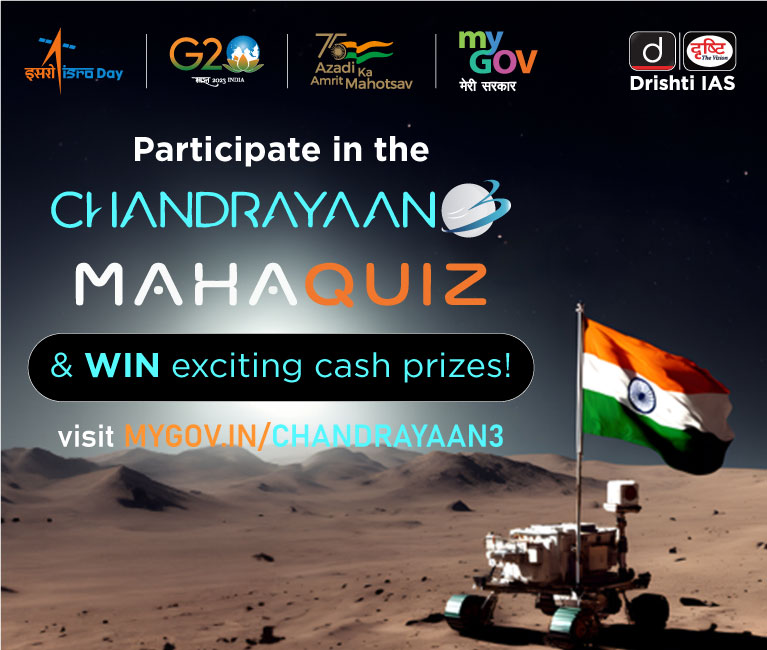
International Relations
India and Argentina Signs Social Security Agreement
For Prelims: Social Security Agreement, Argentina
For Mains: India- Argentina Relations.
Why in News?
India and Argentina recently signed a 'Social Security Agreement(SSA)' aimed at safeguarding the legal rights of professionals in each other's domains. This agreement is expected to facilitate risk-free international mobility for professionals from both countries.
What is the Social Security Agreement?
- About:
- It ensures that the rights of professionals and workers in both countries are protected against the loss of social security benefits or contributions.
- Need:
- The growing number of Indian professionals working in Argentina and Argentine nationals seeking employment in India necessitated this legal framework.
- Key Highlights:
- The SSA applies to legislation in both India and Argentina concerning various aspects of social security, including old age, survivor's pension, and permanent, total disability pension for employed persons.
- The agreement provides rights and benefits to detached workers, i.e., employees working in another country on a temporary basis, and their family members.
- These benefits include cash allowances for retirement or pension, rent, subsidy, or lump sum payments, all as per local legislation, without any reduction, modification, suspension, suppression, or retention.
- The SSA establishes the legal framework for regulating the insurance period, which includes the period of services credited with contributions, contributory benefits, and their export for detached workers.
- This framework also covers crew members of airlines and ships.
- The agreement addresses legislation concerning contributory benefits of the Social Security System in Argentina.
- The agreement would protect the rights of professionals and workers against loss of benefits or contributions made towards social security in both countries and thus facilitate greater movement of professionals and the labour force.
How are India-Argentina Relations?
- Political Relations:
- India‐Argentina relations were elevated to the level of Strategic Partnership in February 2019.
- India opened a Trade Commission in Buenos Aires in 1943, which was later converted into one of the first embassies of India in South America in 1949.
- Argentina had established a Consulate in Calcutta in the 1920s, which was transferred to Delhi as an Embassy in 1950.
- Economic Relations:
- India is the 4th largest trading partner of Argentina, with bilateral trade touching a historic peak of USD 6.4 billion in 2022, recording a growth rate of 12% over 2021.
- Major items of India’s exports to Argentina include petroleum oils, agrochemicals, yarn-fabric-made ups, organic chemicals, bulk drugs and two-wheelers.
- Major items of India’s imports from Argentina include vegetable oils (soya bean and sunflower), finished leather, cereals, residual chemicals and allied products and pulses.
- Cultural Relations:
- India and Argentina have historical and literary ties, such as the visit of Rabindranath Tagore to Argentina in 1924 and the award of an honorary doctorate to Victoria Ocampo by Visva Bharati University in 1968.
- Counter-Terrorism
- India and Argentina issued a separate joint declaration to fight terrorism.
- Argentina condemned the recent terrorist attack in Pulwama, Jammu and Kashmir in the strongest terms.
- Both countries reiterated their commitment to combat terrorism in all its forms and manifestations and gave a call that any country must not allow their territory to be used to launch terrorist attacks on other countries.
Argentina
- Capital: Buenos Aires.
- Official Language: Spanish.
- Argentina is the eighth largest country in the world.
- The country is bounded by Chile to the south and west, Bolivia and Paraguay to the north, and Brazil, Uruguay, and the Atlantic Ocean to the east.
- The highest mountain in the Andes range is the Cerro Aconcagua.
- Argentina is rich in resources, has a well-educated workforce, and is one of South America's largest economies.
- The country is divided into four regions: The Andes, the North, the Pampas, and Patagonia. The Pampas is the agricultural heartland.


International Relations
South China Sea
For Prelims: South China Sea, Spratly Islands, Paracel Islands, Pratas, the Natuna Islands and Scarborough Shoal, ASEAN, UN Convention on the Law of the Sea
For Mains: Significance of the South China Sea and Related Issues
Why in News?
Recently, the Philippines Coast Guard removed barriers placed by Chinese vessels at the entrance to a lagoon off the Scarborough Shoal.
- This incident came after Chinese Coast Guard ships placed a 300-meter-long barrier to prevent boats from the Philippines from entering, adding to the long-running tensions in the South China Sea.
What is the Significance of the South China Sea?
- Strategic Location: The South China Sea is bordered by China and Taiwan to the north, the Indo-Chinese peninsula (including Vietnam, Thailand, Malaysia, and Singapore) to the west, Indonesia and Brunei to the south, and the Philippines to the east (referred to as the West Philippine Sea).
- It is connected by the Taiwan Strait with the East China Sea and by the Luzon Strait with the Philippine Sea (both marginal seas of the Pacific Ocean).
- Trade Importance: Approximately USD 3.37 trillion worth of trade passed through the South China Sea in 2016, making it a crucial global trade route.
- According to the Center for Strategic and International Studies (CSIS), 80% of global trade by volume and 70% by value is transported by sea, with 60% of it passing through Asia and one-third of global shipping moving through the South China Sea.
- China, the world's second-largest economy, relies heavily on the South China Sea, with an estimated 64% of its trade passing through the region. In contrast, only 14% of U.S. trade traverses these waters.
- India relies on the region for approximately 55% of its trade.
- Fishing Ground: The South China Sea is also a rich fishing ground, providing a vital source of livelihood and food security for millions of people in the region.
What are the Major Disputes in the South China Sea?
- Dispute:
- The heart of the South China Sea dispute revolves around territorial claims to land features (islands and reefs) and their associated territorial waters.
- The major island and reef formations in the South China Sea are the Spratly Islands, Paracel Islands, Pratas, the Natuna Islands and Scarborough Shoal.
- As many as 70 disputed reefs and islets are under contention, with China, Vietnam, the Philippines, Malaysia, and Taiwan all building more than 90 outposts on these disputed features.
- China claims up to 90% of the sea with its "nine-dash line" map and has physically expanded islands and constructed military installations to assert control.
- China has been particularly active in the Paracel and Spratly Islands, engaging in extensive dredging and artificial island-building, creating 3,200 acres of new land since 2013.
- China also controls the Scarborough Shoal through a constant Coast Guard presence.
- The heart of the South China Sea dispute revolves around territorial claims to land features (islands and reefs) and their associated territorial waters.
- Efforts to Resolve the Dispute:
- Code of Conduct (CoC): Talks between China and the Association of Southeast Asian Nations (ASEAN) have aimed at establishing a CoC to manage the situation, but progress has been slow due to internal ASEAN disputes and the magnitude of China's claims.
- Declaration on the Conduct of Parties (DoC): In 2002, ASEAN and China adopted the DoC, affirming their commitment to peaceful dispute resolution in accordance with international law.
- The DoC was meant to pave the way for a CoC, which remains elusive.
- Arbitral Proceedings: In 2013, the Philippines initiated arbitral proceedings against China under the UN Convention on the Law of the Sea (UNCLOS).
- In 2016, the Permanent Court of Arbitration (PCA) ruled against China's "nine-dash line" claim, stating it was inconsistent with UNCLOS.
- China rejected the arbitration ruling and asserted its sovereignty and historical rights, challenging the PCA's authority.
Note
Under the UNCLOS, each state can establish a territorial sea of up to 12 nautical miles and an Exclusive Economic Zone (EEZ) extending up to 200 nautical miles from the territorial sea baseline.
Way Forward
- Multilateral Engagement: Encourage active involvement from the international community, including countries outside the region, to facilitate diplomatic efforts and ensure that any resolution is fair, impartial, and in line with international norms particularly the United Nations Convention on the Law of the Sea.
- Environmental Protection: There is need for collaboration on efforts to protect the marine environment in the South China Sea, including measures to combat illegal fishing, reduce pollution, and preserve biodiversity because the total fish stocks in this region have been depleted by 70 to 95% since the 1950s and coral reefs, have been declining by 16% per decade, according to a report from the Center for Strategic and International Studies.
- Maritime Peace Parks: Explore the concept of creating maritime peace parks or protected areas within the South China Sea. Similar to terrestrial national parks, these areas could be designated for peaceful purposes, such as conservation, research, and ecotourism, transcending political disputes.
UPSC Civil Services Examination, Previous year Question (PYQ)
Mains
Q. Evaluate the economic and strategic dimensions of India’s Look East Policy in the context of the post-Cold War international scenario. (2016)


Biodiversity & Environment
Illicit Trade of Tortoises and Hard-Shell Turtles
For Prelims: Turtles, Indian star tortoise, Olive Ridley, Green Turtle
For Mains: Major threats to tortoises and turtles, Wildlife trafficking.
Why in News?
A recent study titled 'From Pets to Plates,' published in Oryx, The International Journal of Conservation, has provided insights into the illicit trade of tortoises and hard-shell turtles.
- The study was conducted by experts associated with the Counter Wildlife Trafficking Programme of the Wildlife Conservation Society-India.
What are the Key Highlights of the Report?
- Chennai Leads the Network:
- Chennai emerges as the primary node in the tortoise and hard-shell turtle trafficking network.
- The city plays a central role in the global pet trade, facilitating the illicit trade in these reptiles.
- Mumbai, Kolkata, Bengaluru, Anantapur, Agra, North 24 Parganas (in West Bengal), and Howrah (near the India-Bangladesh border) are also crucial in the network, contributing significantly to the trafficking of tortoises and turtles.
- Chennai emerges as the primary node in the tortoise and hard-shell turtle trafficking network.
- Predominantly Domestic Soft-Shell Turtle Trafficking:
- Soft-shell turtle trafficking is primarily domestic in nature. International trafficking of soft-shell turtles to and from India is mostly limited to Bangladesh.
- The Asian Turtle Crisis:
- Wild populations of tortoises and freshwater turtles face immense pressure from illegal trade for pets, food, and medicines.
- At least 15 of the 30 threatened TFT (Tortoises and Freshwater Turtles) species in India are illegally traded.
- Freshwater species, such as the Indian flapshell turtles, are in great demand in illegal markets.
- The Indian Softshell turtle, also known as the Ganges Softshell turtle, is a freshwater reptile found in the Ganges, Indus and Mahanadi rivers in northern and eastern India.
- Wild populations of tortoises and freshwater turtles face immense pressure from illegal trade for pets, food, and medicines.
- Comparing Networks:
- The study found that the tortoise and hard-shell turtle network had a more extensive geographical scale with more international trafficking links compared to the soft-shell turtle network.
- Complex routes were recorded in tortoise and hard-shell turtle smuggling, whereas soft-shell turtle trafficking primarily followed a one-directional route from source to destination.
- Dire Condition of Trafficked Turtles:
- Turtles involved in the illegal trade often arrive dehydrated, starved, and with injuries.
- High mortality rates among trafficked turtles highlight the urgency of addressing this issue.
Tortoise and Hard-Shell Turtles:
- All tortoises are turtles as they belong to the order Testudines/Chelonia.
- Tortoises are distinguished from other turtles by being land-dwelling, while many (though not all) other turtle species are at partly aquatic.
- Hard-shell turtles have rigid and bony shells that provide protection and cannot be easily compressed.
- According to the International Union for Conservation of Nature (IUCN) most of the species of turtles and tortoises are vulnerable, endangered or critically endangered.
- Indian star tortoise, Olive Ridley Turtle , and Green Turtle are a few examples of Tortoise and Hard-Shell Turtles in India.
Soft-Shell Turtle
- Softshell turtles are a large group of reptiles in the family Trionychidae.
- They are called softshells because their shells lack hard scales, and are instead leathery and flexible.
- They often lie buried in mud, sand, and shallow water.
- Commonly found Soft-Shell Turtles in India are Indian Flapshell Turtles, Indian peacock softshell turtles, and Leith’s Soft-shelled Turtle.


Important Facts For Prelims
R21/Matrix-M Malaria Vaccine
Why in News?
Recently, the World Health Organisation (WHO) has recommended the use of the R21/Matrix-M malaria vaccine, co-developed by the University of Oxford and the Serum Institute of India.
- The Matrix-M component is a proprietary saponin-based adjuvant developed by Novavax and licensed to the Serum Institute for use in endemic countries.
- As of now, the vaccine has been licensed for use in Ghana, Nigeria and Burkina Faso.
What is Adjuvant?
- An adjuvant is an ingredient in a vaccine that enhances the immune system’s response to that vaccine.
- Adjuvants help the immune system better recognize what’s in a vaccine and remember it longer, increasing the amount of time that a vaccine may offer protection.
- Matrix-M adjuvant is derived from saponins, naturally occurring compounds found in the bark of the Quillaja saponaria tree in Chile. Saponins have a history of medicinal use.
What is Malaria?
- About:
- Malaria is a life-threatening disease caused by the Plasmodium parasite.
- This parasite is transmitted to humans through the bites of infected female Anopheles mosquitoes.
- Malaria is a life-threatening disease caused by the Plasmodium parasite.
- Plasmodium Parasite:
- There are 5 Plasmodium parasite species that cause malaria in humans and 2 of these species, P. falciparum and P. vivax, pose the greatest threat.
- P. falciparum is the deadliest malaria parasite and the most prevalent on the African continent.
- P. vivax is the dominant malaria parasite in most countries outside of sub-Saharan Africa.
- The other malaria species which can infect humans are P. malariae, P. ovale and P. knowlesi.
- There are 5 Plasmodium parasite species that cause malaria in humans and 2 of these species, P. falciparum and P. vivax, pose the greatest threat.
- Symptoms:
- Mild symptoms are fever, chills and headache. Severe symptoms include fatigue, confusion, seizures, and difficulty breathing.
- Prevalence:
- According to the WHO’s World Malaria report 2022, there were 247 million cases of malaria in 2021 compared to 245 million cases in 2020.
- It is mostly found in tropical countries. Four African countries accounted for just over half of all malaria deaths worldwide: Nigeria (31.3%), the Democratic Republic of the Congo (12.6%), United Republic of Tanzania (4.1%) and Niger (3.9%)
- Vaccine:
- Along with the recently confirmed R21/Matrix-M vaccine, WHO also recommends broad use of the RTS,S/AS01 malaria vaccine among children living in regions with moderate to high P. falciparum malaria transmission.
- Elimination Strategies:
- Global:
- The WHO Global Technical Strategy for Malaria 2016–2030, updated in 2021, sets ambitious but achievable global targets, including:
- reducing malaria case incidence by at least 90% by 2030
- reducing malaria mortality rates by at least 90% by 2030
- eliminating malaria in at least 35 countries by 2030
- preventing a resurgence of malaria in all countries that are malaria-free.
- The WHO Global Technical Strategy for Malaria 2016–2030, updated in 2021, sets ambitious but achievable global targets, including:
- India:
- Global:
UPSC Civil Services Examination, Previous Year Questions (PYQs)
Q. Widespread resistance of malarial parasite to drugs like chloroquine has prompted attempts to develop a malarial vaccine to combat malaria. Why is it difficult to develop an effective malaria vaccine? (2010)
(a) Malaria is caused by several species of Plasmodium
(b) Man does not develop immunity to malaria during natural infection
(c) Vaccines can be developed only against bacteria
(d) Man is only an intermediate host and not the definitive host
Ans: (b)


Important Facts For Prelims
Nagorno-Karabakh Conflict
Why in News?
Recently, Azerbaijan launched a military operation in the disputed Nagorno-Karabakh region, resulting in casualties. The operation is part of a long-standing dispute between Azerbaijan and Armenia over the region
What is the Nagorno-Karabakh Conflict?
- Nagorno-Karabakh, known as Artsakh by Armenians, is a landlocked mountainous area in the Caucasus region (the transcontinental region between the Black Sea and the Caspian Sea).
- It is internationally recognised as part of Azerbaijan but its inhabitants are predominantly ethnic Armenians.
- They have their own government which has enjoyed close links to Armenia's but has not been officially recognised by Armenia or any other country.
- The conflict dates back to the late 1980s when the region declared its independence from Azerbaijan as the Soviet Union collapsed.
- The first war erupted between Armenia and Azerbaijan over the territory, which ended with a ceasefire in 1994, leaving Nagorno-Karabakh and some surrounding areas under Armenian control.
- The ceasefire was frequently violated by both sides, and several attempts to negotiate a peaceful settlement failed.
- In 2020, Azerbaijan launched the Second Karabakh War, winning a resounding victory and retaking seven surrounding districts and about a third of Nagorno-Karabakh.
Azerbaijan
- Azerbaijan is a country in Asia that is bordered by Russia, Georgia, Armenia, and Iran.
- The east of the country is bordered by the Caspian Sea.
- Much of the north and west is covered by the Caucasus Mountains.
- Capital city: Baku.
- Azerbaijan is abundant in oil and natural gas.
- Yanar Dag, a famous site in Azerbaijan, has a natural eternal fire fueled by seeping natural gases, burning for over 65 years along the Caspian Sea. This unique phenomenon aligns with Azerbaijan's nickname, "The Land of Fire."
Armenia
- A landlocked country in the Caucasus with Turkey to the west, Georgia to the north, and Azerbaijan to the east.
- Capital: Yerevan.
- Armenia is a mountainous country.
- Highest Peak: Mount Ararat.
UPSC Civil Services Examination, Previous Year Question (PYQ)
Prelims
Q. Consider the following pairs:
| Regions often mentioned in news | Reason for being in news | |
| 1. | North Kivu and Ituri | War between Armenia and Azerbaijan |
| 2. | Nagorno-Karabakh | Insurgency in Mozambique |
| 3. | Kherson and Zaporizhzhia | Dispute between Israel and Lebanon |
How many of the above pairs are correctly matched?(2023)
(a) Only one
(b) Only two
(c) All three
(d) None
Explanation: (d)
- Kivu and Ituri are related to the Republic of Congo. A war between the Republic of congo and Rawanda started in 1994 with genocide of 800,000 Rawandan Tutsis and Hutus. Hence, pair 1 is not correctly matched.
- Nagorno-Karabakh is a region of southwestern Azerbaijan. It is used to refer to an autonomous oblast (province) of the former Azerbaijan Soviet Socialist Republic (S.S.R.) and to the Republic of Nagorno-Karabakh, a self-declared country whose independence is not internationally recognized. The old autonomous region occupied an area of about 1,700 square miles (4,400 square km), while the forces of the self-proclaimed Republic of Nagorno-Karabakh presently occupy some 2,700 square miles (7,000 square km). Hence, pair 2 is not correctly matched.
- Kherson and Zaporizhzhia are related to Ukraine and they are related to the dispute between Ukraine and Russia. Hence, pair 3 is not correctly matched.
Important Facts For Prelims
Measles
Why in News?
Recently, there has been a significant spike in measles cases and fatalities in Delhi, attributed to under-reporting of cases during the Covid-19 lockdowns in the previous years.
- The Covid-19 lockdowns in 2020 and 2021, the focus and resources were primarily directed towards managing the pandemic, leading to weakened surveillance for measles and other diseases, contributing to measles cases, along with challenges related to vaccine acceptance, even among some affluent segments of society.
What is Measles?
- About:
- Measles virus is an enveloped, ribonucleic acid virus of the genus Morbillivirus.
- Measles is highly contagious, and an infected person will often transmit the virus to over 90% of unprotected close contacts.
- The virus infects the respiratory tract, then spreads throughout the body. Measles is a human disease and is not known to occur in animals.
- Measles can be entirely prevented through a two-dose vaccine and has been officially eliminated in many countries with advanced healthcare systems.
- Treatment:
- No specific antiviral treatment exists for measles virus.
- Severe complications from measles can be avoided through medical care that ensures good nutrition, adequate fluid intake, and treatment of dehydration.
- Prevention:
- Routine measles vaccination for children, combined with mass immunization campaigns in countries with high case and death rates, are key public health strategies to reduce global measles deaths.
- Cases of Measles in India:
- Measles cases dropped by 62% between 2017 and 2021, from 10.4 to 4 cases per million population.
What are the Initiatives to Tackle Measles?
- The Measles & Rubella Initiative:
- Launched in 2001, the Measles & Rubella Initiative (M&R Initiative) is a global partnership led by the American Red Cross, United Nations Foundation, Centers for Disease Control and Prevention (CDC), UNICEF and WHO.
- The Initiative is committed to ensuring that no child dies from measles or is born with congenital rubella syndrome. We help countries to plan, fund and measure efforts to stop measles and rubella for good.
- Measles-Rubella (MR) Vaccination:
- It targets around 41 crore children across India, covering all children aged between 9 months and less than 15 years and will be given a single shot of Measles-Rubella (MR) vaccination irrespective of their previous measles/rubella vaccination status or measles/rubella disease status.
- Other Initiatives include Universal Immunization Programme (UIP), Mission Indradhanush and Intensified Mission Indradhanush.
UPSC Civil Services Examination, Previous Year Questions (PYQs)
Q1. Consider the following statements:
- Adenoviruses have single-stranded DNA genomes whereas retroviruses have double-stranded DNA genomes.
- Common cold is sometimes caused by an adenovirus whereas AIDS is caused by a retrovirus.
Which of the statements given above is/are correct?
(a) 1 only
(b) 2 only
(c) Both 1 and 2
(d) Neither 1 nor 2
Ans: (b)


Rapid Fire
Rapid Fire Current Affairs
New Study Challenges Existence of Lightning on Venus
A recent study, utilizing data from the National Aeronautics and Space Administration (NASA)'s Parker Solar Probe, has raised doubts about the presence of lightning on Venus, a topic debated among scientists for decades.
- The study published in Geophysical Review Letters, suggests that the observed "lightning" near Venus may not be actual lightning but rather disturbances in the planet's weak magnetic fields.
- Previous scientific belief suggested constant lightning on Venus, but signals collected by various instruments over time challenge this notion.
- Another study suggests that previous observations of lightning may have been misinterpreted meteor burn-ups in the atmosphere.
- Venus is known for its inhospitable conditions, including extreme temperatures that makes it the hottest planet in the solar system and atmospheric pressure.
Read more: Active Volcanoes on Venus, Recent Findings about Venus
Military Nursing Service(MNS) celebrates 98th Raising Day
- The MNS recently celebrated its 98th Raising Day on 1st October, 2023. As one of the oldest and most distinguished all-women services in the Armed Forces, MNS has made significant contributions to healthcare in India.
- The MNS originated during the pre-independence colonial era when British and Indian soldiers served in the British Army. In 1888, the Indian Army Nursing Services (IANS) was formally established, marking the start of military nursing in India.
- During World War I and II, officers of IANS played a crucial role in providing medical care to wounded soldiers.
- On October 1st October 1926, the Permanent Nursing Service was raised in the Indian Army and designated as the Indian Military Nursing Service.
- Post-Independence, MNS was established as part of the Armed Forces Medical Services (AFMS).
National Turmeric Board
Recently, the Government of India has established the National Turmeric Board. As India is the world's largest producer (75% of global turmeric production), consumer, and exporter of turmeric, this move aims to enhance the development and expansion of the turmeric industry within the country.
- The Board will consist of a Chairperson appointed by the Central Government, members from key government departments including the Ministry of AYUSH, Departments of Pharmaceuticals, Agriculture & Farmers Welfare, Commerce & Industry of the Union Government, along with rotating senior State Government representatives from three states.
- The Board is expected to help develop and grow the spice market in India, which controls over 62% share of the turmeric world trade.
- The largest producing states of Turmeric are Maharashtra, Telangana, Karnataka and Tamil Nadu.
- With its strategic approach, it aspires to propel turmeric exports to a staggering USD 1 Billion by 2030, ultimately benefiting both growers and consumers.
Read more: Spices Sector in India
New Fish Species Discovered in Nagaland's Milak River
Recently, researchers have identified a previously unknown fish species, Badis limaakumi, in Nagaland's Milak River.
- This newfound species, named after Limaakum, a zoology professor at Fazl Ali College in Nagaland, distinguishes itself with a unique opercular blotch near its opercular spine.
- The absence of spots on its sides and cleithrum, along with fewer lateral line scales, further sets it apart.
- Belonging to the Badidae or Badis family, a group of freshwater fish often found in slow or moderately flowing streams, this fish is also a culinary delight in various regions across India, Bangladesh, Nepal, Pakistan, Thailand, and Myanmar.
- Fish from the Badis family are also known as chameleon fish for their ability to change colour. This helps them blend with the surroundings when under stress.



